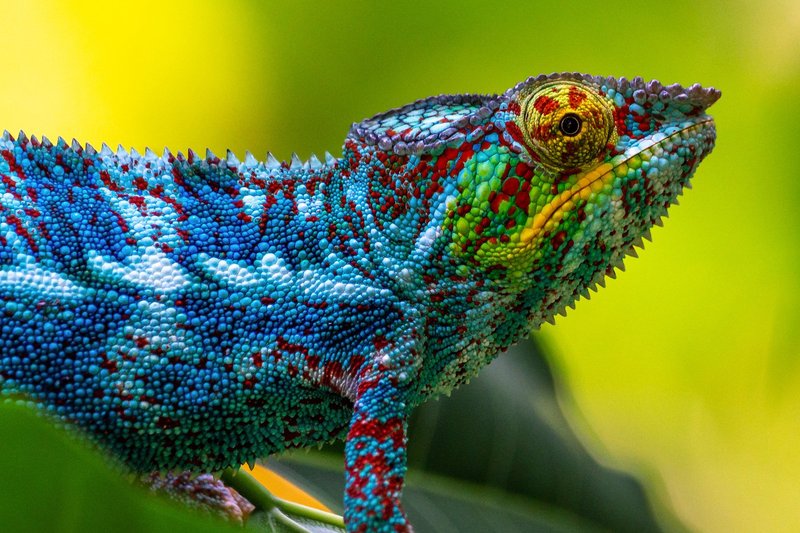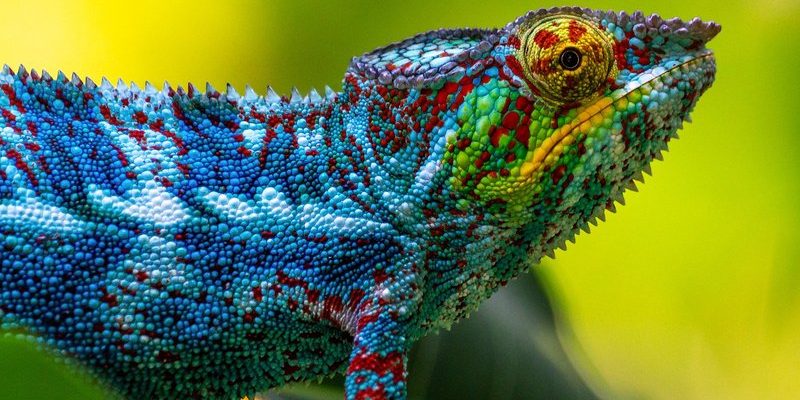
When we talk about color change in chameleons, we’re often caught between myths and reality. Sure, they can shift hues, but it’s not quite as straightforward as “just changing colors.” It’s not like flipping a switch; there’s a lot happening beneath the surface. So, grab a cup of coffee, and let’s dive into the world of the Oustalet’s chameleon and unravel these colorful myths.
Understanding the Oustalet’s Chameleon
The Oustalet’s chameleon, or *Furcifer oustaleti*, is one of the largest chameleons found in Madagascar. With a body length of around 20 inches, they’re an impressive sight. But beyond their size, what makes them so fascinating is their ability to change color, a trait that has led to quite a few misconceptions.
You might picture them changing from green to brown at the drop of a hat. However, this isn’t exactly how it works. Chameleons change colors primarily due to emotional states, temperature adaptations, and communication. They aren’t just putting on a show for us; instead, these color changes serve significant purposes in their lives.
When feeling threatened or excited, for example, they might display vibrant colors as a warning to predators or to attract a mate. It’s all about survival in the wild, not a party trick they perform for an audience.
Why Do Chameleons Change Colors?
You might be wondering why chameleons have this remarkable ability in the first place. Changing colors helps them in several ways, such as regulating their body temperature. Imagine being out in the sun—sometimes you want to wear something light and bright; other times, something more subdued.
Here’s how it works for our chameleon friends:
- Camouflage: By changing colors to match their environment, Oustalet’s chameleons can avoid predators. This isn’t just about blending in; it’s a strategic move to stay alive.
- Communication: Those bright colors can signal to other chameleons. For instance, a male might flaunt brighter colors to show off to a female or intimidate a rival.
- Temperature Regulation: Darker colors absorb heat, which can help during cooler periods. Alternatively, lighter colors reflect sunlight when things get too warm.
So, the ability to change color is not just a flashy gimmick but a vital survival tool that serves multiple functions in their daily lives.
Common Myths About Chameleon Color Change
As with many fascinating creatures, myths abound. One of the most common is that chameleons change color to match any background instantly. Here’s the thing: that’s not entirely accurate. While it’s true they can adapt to their surroundings, they don’t necessarily mimic every shade they see.
Instead, their color change is often influenced by factors like lighting conditions, their mood, and sometimes, even the environment’s temperature. It’s more of a slow dance than an instant transformation.
Another myth suggests that they change colors as a direct response to human interaction. Although they can react to environmental changes, they don’t change color to impress us or respond to how we feel. It’s more about their own needs and surroundings.
How Do Oustalet’s Chameleons Change Colors?
So, how does this magical transformation happen? It all boils down to special cells in their skin called chromatophores. These cells contain different pigments—reds, yellows, and blues. When the chameleon decides it’s time for a color change, it expands or contracts these cells.
Imagine an artist mixing paint; they can create different shades by combining different colors. Similarly, the chameleon’s ability to manipulate these pigments allows for a wide variety of colors.
Additionally, there are deeper skin layers with iridophores, which reflect light and can create vivid hues. The interplay between chromatophores and iridophores is what results in the stunning color variations we often see.
Are All Chameleons the Same?
It’s easy to think that all chameleons work the same way because of their famous color-changing tricks. But, that’s a big mistake! The Oustalet’s chameleon is just one species among many. Each type has its unique traits and methods of color change.
Some smaller chameleons might change from green to brown more easily, while others might showcase a wider array of colors. Even within the same species, individual chameleons may display different abilities based on factors like age, health, and environment.
So if you ever get a chance to observe these creatures, remember that their color changes vary and are influenced by a combination of physical and emotional factors.
Why Is Understanding This Important?
You might think, “Why should I care about how a chameleon changes colors?” Well, understanding these little marvels of nature can deepen our appreciation for wildlife and biodiversity. It’s not just about their ability to shift colors; learning how they interact with their environment sheds light on the complex relationships in ecosystems.
Moreover, dispelling myths about chameleons can help foster better care if you ever consider owning one as a pet. Ensuring they have the right environment and understanding their needs is crucial for their well-being. When you know the truth about their color-changing abilities, you’re better equipped to create a habitat where they can thrive.
The Oustalet’s chameleon is truly a captivating creature with a colorful reputation. While they can change colors, the reality is a bit more complex than the myths suggest. Their ability to shift hues serves vital functions for survival, communication, and temperature regulation.
So next time you hear someone claim that chameleons can change colors to blend in with every background instantly, you’ll know the truth. They might not be as magical as the myths make them out to be, but they’re certainly fascinating in their own right. Embracing their reality not only helps us appreciate these incredible reptiles but also encourages us to respect and protect their habitats.

